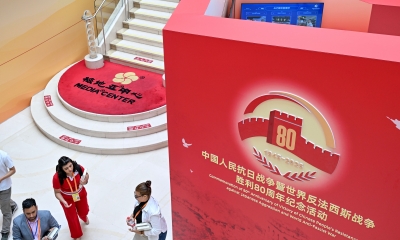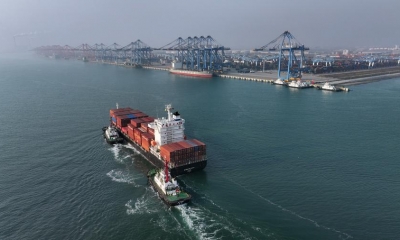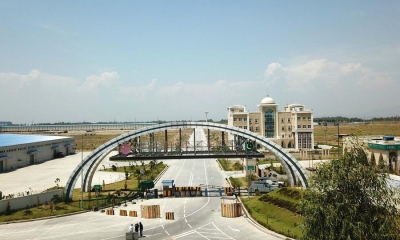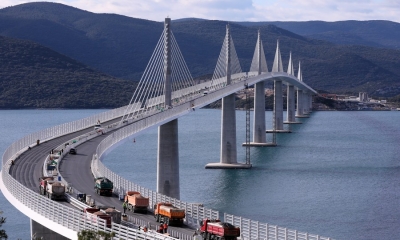People’s Republic of China at 75: A Magnificent Journey from Rags to Glory

Over the past 75 years, under the strong leadership of the Communist Party of China, the country has made magnificent progress in social and economic development.
Marking the 75th anniversary of the founding of the People’s Republic of China (PRC) on October 1, the Chinese people, under the leadership of the Communist Party of China (CPC) have made an epic journey from nowhere to everywhere.
The milestone journey from being poor and weak to being prosperous and strong is brimming with hardships, strenuous efforts, resolute commitments, pragmatic strategies, viable actions, social harmony and on top of them, leadership’s far-reaching and inclusive vision.
Reaching at age of 75, eventually, China has taken a centre stage finding its own path to high-tech modernization with injecting positive energy into world peace and development.
Since the 18th CPC National Congress, China has offered a new development philosophy that gives full play to dynamics, vitality and potential of high-quality development, effectively responding to various risks and challenges on the way forward.
China’s economic power has thus risen by a significant margin. In 1952, China’s GDP was only $9.6 billion, but in 2023 it exceeded $17.8 trillion. At present, China is the world’s second largest economy, largest manufacturer, largest trader of goods, second largest consumer of commodities and largest holder of foreign exchange reserves. China has long contributed around 30 percent to global economic growth, which plays an important role as a stabilizer and source of strength despite the rising instability and uncertainty in the global economy.
China’s scientific and technological innovation keeps soaring high. The past 75 years have witnessed the enhancement of China’s innovation capacity with entering into the era of new quality productive forces. Sustainable progress and abundant breakthroughs have been made in science and technology. The Tiangong space station has been fully built and placed into operation, China’s first home-made trunk line passenger aircraft, the C919 has been successfully put into commercial operation, the world’s first tri-fold mobile phone made by HUAWEI is incredible. China has become a major country in science and technology with significant influence in the world and positively contributed to global technological advancement.

Over the past 75 years, China’s circle of friends has also expanded, with diplomatic relations established with a total of 183 countries as of September, contributing to global stability. In September this year, leaders from China and Africa successfully convened the 2024 Summit of the Forum on China-Africa Cooperation (FOCAC) in Beijing, setting forth plans to enhance China-Africa cooperation in the new era. And more events are anticipated to be held between China and other nations of the Global South in the upcoming months to address development and other global challenges.
China has acquired fruitful outcomes in green development. New energy vehicle production and sales in China account for over 60 percent of the world total. The world’s 70 percent of photovoltaics components and 60 percent of wind power equipment are from China, which gives a strong boost to global energy transition and green, low-carbon and sustainable development. China will make the steepest cuts in the world to the intensity of carbon emissions and complete the process from carbon emissions peaking in 2030 to carbon neutrality in 2060, all in the shortest possible time, making tremendous contributions to global climate change response as a responsible major country.
China’s international influence continues to surge. It always bears in mind the future of humanity and the well-being of the people, acts as the defender, builder and contributor of the international order and the indispensable and trustworthy vital force on the world stage. Over the past decade, Chinese President Xi Jinping put forward Building a Community with a Shared Future for Mankind, the Belt and Road Initiative, the Global Development Initiative, the Global Security Initiative, and the Global Civilization Initiative respectively, which contributed Chinese wisdom and solution to improving global governance, responding to global challenges and tackling human issues.
Along with celebrating the 75th anniversary of the founding of the People’s Republic of China, Beijing also marked the 70th anniversary of the Five Principles of Peaceful Coexistence. The Vision of Building a Community with a Shared Future for Mankind carries forward the same spirit of the Five Principles of Peaceful Coexistence and is the most effective move to sustain, promote and upgrade the Five Principles in the new circumstances.
The development over the past 75 years has witnessed China’s role in global security.
Since 2008, the Chinese People’s Liberation Army (PLA) has sent 46 escort task groups to the Gulf of Aden and waters off Somalia, providing escort for some 7,300 Chinese and foreign vessels and conducting diverse tasks including anti-terrorism, anti-piracy, joint search and rescues as well as evacuations.
Moreover, China has actively participated in UN peacekeeping operations. China is a main contributor to both UN peacekeeping assessments and the UN’s regular budget, and the largest troop-contributing country among the permanent members of the UN Security Council. In recent years, the PLA has earnestly implemented the purposes and principles of the UN Charter, built an 8,000-strong standby peacekeeping force, and sent more than 50,000 peacekeepers to UN peacekeeping missions in over 20 countries and regions.
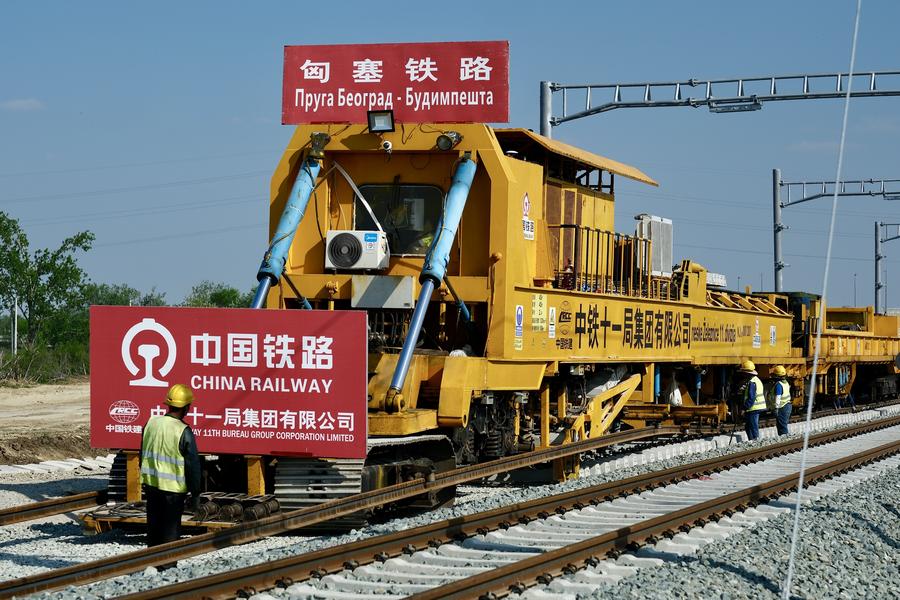
Chinese civilization features inclusiveness and openness. Since ancient times, China has upheld the supremacy of global harmony and being amicable to others. The Chinese nation has consistently pursued diplomatic engagement and trade rather than aggression and expansion. For example, Zheng He, the Ming Dynasty navigator who led a powerful fleet across the Pacific and Indian Oceans but occupied no land, and instead fostered friendly relations with the countries he visited.
Moreover, in history, China endured significant suffering from colonialism and hegemonism. These experiences have left an indelible mark on the Chinese psyche, fostering deep sympathy for other groups that face exploitation and oppression. From the challenging early years following the founding of the PRC to its subsequent development, China has continuously strived to support other developing regions, advocating for a more equitable global order.
Over the past 75 years, under the strong leadership of the Communist Party of China, the country has made magnificent progress in social and economic development. From a once backward agrarian society, China has transformed itself into the world’s second-largest economy, increasingly integrated to the global economy and offering significant opportunities to the rest of the world.
In connection with China’s ongoing efforts to open up to the world, The China-Europe freight trains now pass daily through Alashankou Port in Northwest China’s Xinjiang Uygur Autonomous Region, becoming the new “steel camels” of the China-proposed Belt and Road Initiative (BRI), a modern evolution that takes on and carries forward the spirit of the ancient Silk Roads originated 2,000 years ago.
The story of Xinjiang was only one of the most recent examples of China’s opening-up efforts. In fact, China’s opening-up has gradually expanded from the country’s southeastern coastal regions to its central and northwestern inland regions. In order to improve a new open economic ecosystem, China has created 22 pilot free trade zones at various stages, and Hainan Free Trade Port, creating a new pattern of reform and opening-up that coordinates its coastal, inland and border areas.
Shenzhen, South China’s Guangdong Province, is a pioneering city in China’s reform and opening-up. It developed from a small fishing village to today’s technology hub and a modern metropolis. The city’s exports and imports account for one-tenth of China’s total foreign trade, customs data showed.
Over the last 75 years, consultative democracy has been an important component of the whole-process people’s democracy, a unique form and distinctive advantage of China’s socialist democratic politics, and an important embodiment of the Party’s mass line in the political sphere.
Chinese leadership always points out that upholding and developing socialism with Chinese characteristics is the linchpin of consolidating the common ideological and political foundation, and Xi Jinping Thought on Socialism with Chinese Characteristics for a New Era is the general guideline for the work of the NPC and CPPCC.
The article reflects the author’s opinions, and not necessarily the views of China Focus.
 Facebook
Facebook
 Twitter
Twitter
 Linkedin
Linkedin
 Google +
Google +




